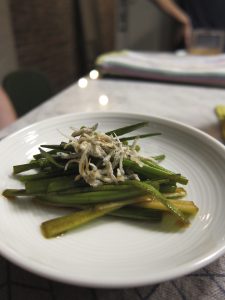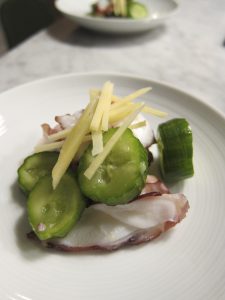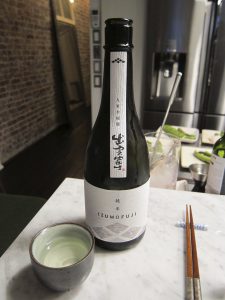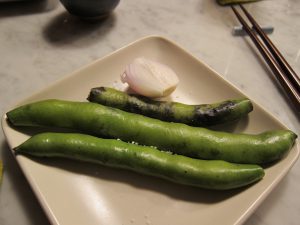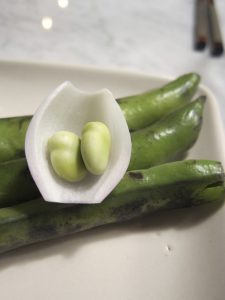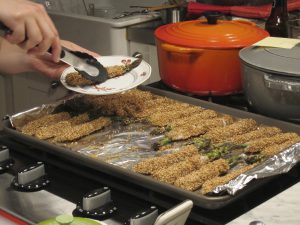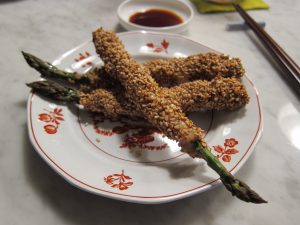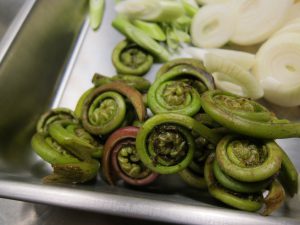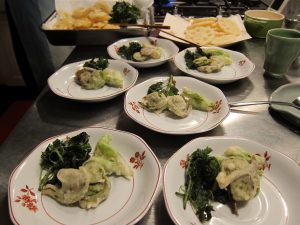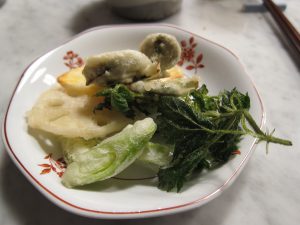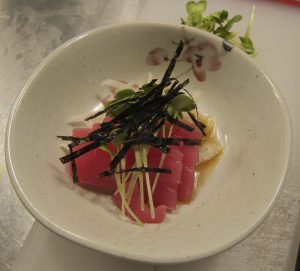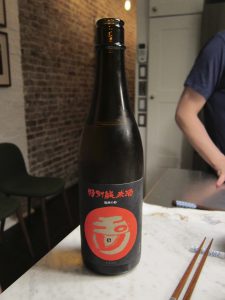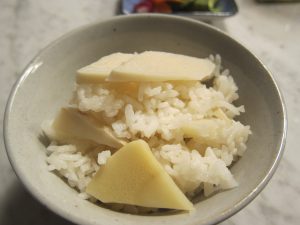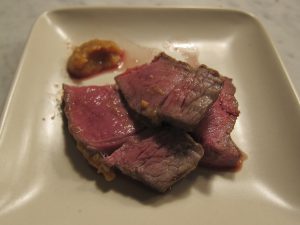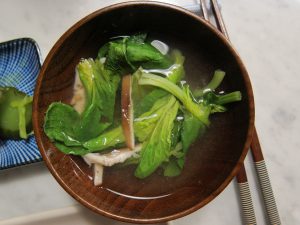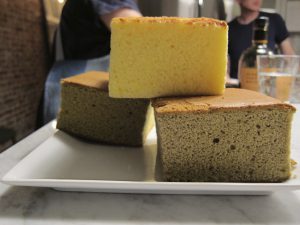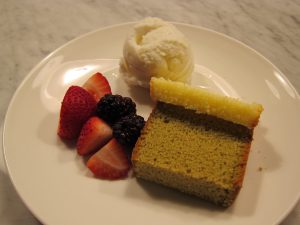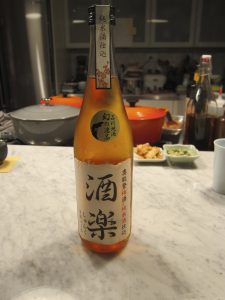In the chef’s words:
This month’s dinner theme will be Japanese and we will serve a kyo-kaiseki inspired meal celebrating spring vegetables and local produce. Though kaiseki is often associated with multi-course meals and tea ceremonies, the word kaiseki originally had little to do with cooking or tea. Kai means “bosom” and seki means “stone,” and the term comes from the habit of buddhist monks carrying heated stones in their robes so the warmth of the stones will stave off hunger. Over the years the term has come to mean “light meals,” often to accompany tea ceremonies. We will do a few courses of simple “home-style kaiseki,” something between an elaborate course meal and heated stones.
Hassun (八寸)— “An expression of the Season”
Spring Onion Salad
Spring Vegetable Tempura
Sesame-Coated Asparagus with Pork Belly
Grilled Fava Beans and Spring Onions
Octopus and Cucumber Salad
Sendai (仙台市)— Nikka Coffey Malt, vermouth, cherry bitters
Mukozuke (向付)—Sashimi Dish
Tuna with Ginger Sauce
Izumo Fuji “Ancient Shrine” Junmai
Futamono (蓋物)— Lidded Dish
Sake-Steamed Littleneck Clams
Kurosawa Junmai Kimoto
Yakimono (焼物)—Grilled Dish
Grilled Sirloin with Miso Glaze
Gohan (御飯) — Rice
Bamboo Shoot Rice with Miso Soup and Fresh Pickles
Tamagawa Tokubetsu Junmai “Heart of Oak”
Mizumono (水物)— Dessert
Green Tea Kasutera with Strawberries and Vanilla Ice Cream
Plum Wine
Chef: Joy & Mike
Photographer: Angela

